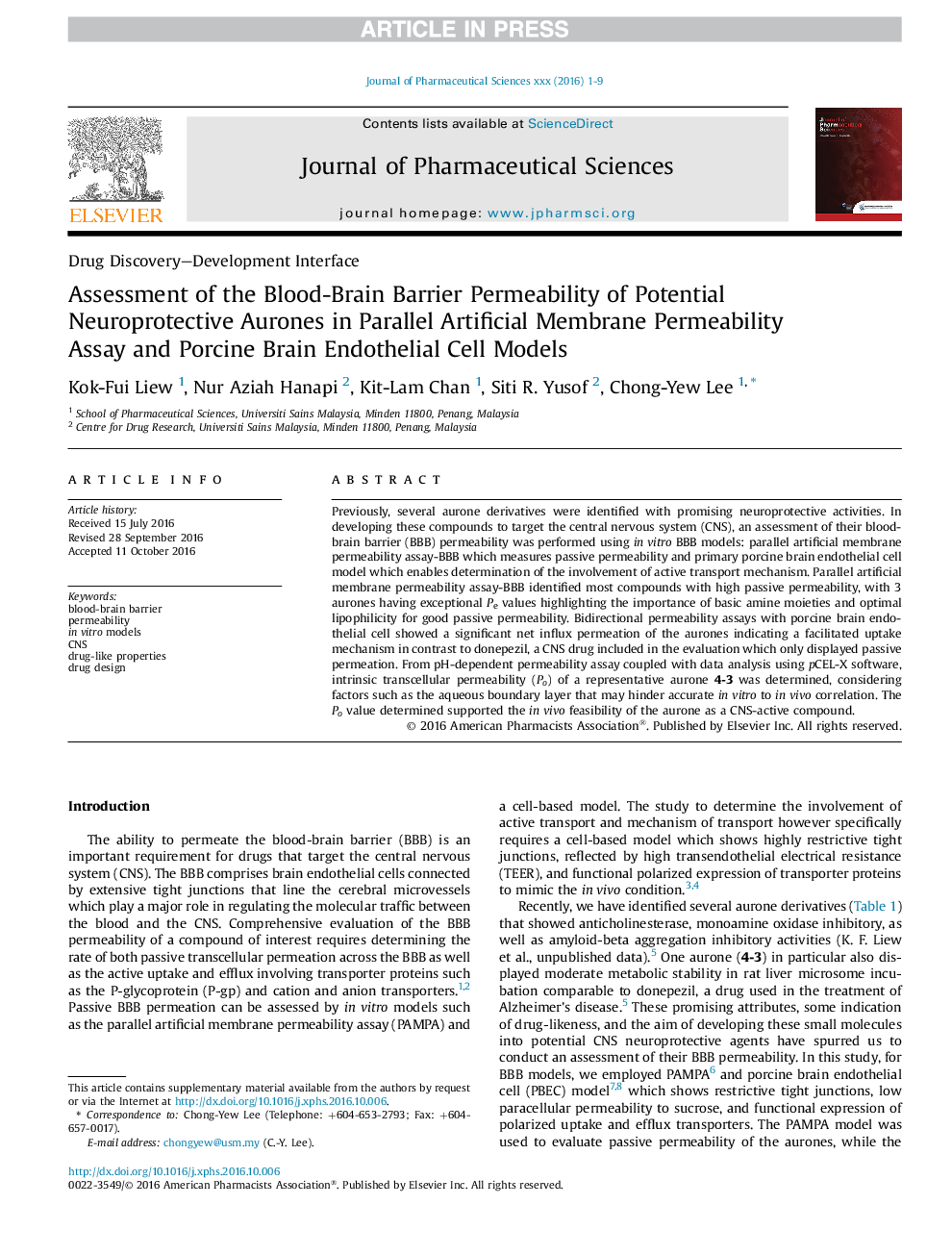| Article ID | Journal | Published Year | Pages | File Type |
|---|---|---|---|---|
| 8514426 | Journal of Pharmaceutical Sciences | 2017 | 9 Pages |
Abstract
Previously, several aurone derivatives were identified with promising neuroprotective activities. In developing these compounds to target the central nervous system (CNS), an assessment of their blood-brain barrier (BBB) permeability was performed using in vitro BBB models: parallel artificial membrane permeability assay-BBB which measures passive permeability and primary porcine brain endothelial cell model which enables determination of the involvement of active transport mechanism. Parallel artificial membrane permeability assay-BBB identified most compounds with high passive permeability, with 3 aurones having exceptional Pe values highlighting the importance of basic amine moieties and optimal lipophilicity for good passive permeability. Bidirectional permeability assays with porcine brain endothelial cell showed a significant net influx permeation of the aurones indicating a facilitated uptake mechanism in contrast to donepezil, a CNS drug included in the evaluation which only displayed passive permeation. From pH-dependent permeability assay coupled with data analysis using pCEL-X software, intrinsic transcellular permeability (Po) of a representative aurone 4-3 was determined, considering factors such as the aqueous boundary layer that may hinder accurate in vitro to in vivo correlation. The Po value determined supported the in vivo feasibility of the aurone as a CNS-active compound.
Related Topics
Health Sciences
Pharmacology, Toxicology and Pharmaceutical Science
Drug Discovery
Authors
Kok-Fui Liew, Nur Aziah Hanapi, Kit-Lam Chan, Siti R. Yusof, Chong-Yew Lee,
